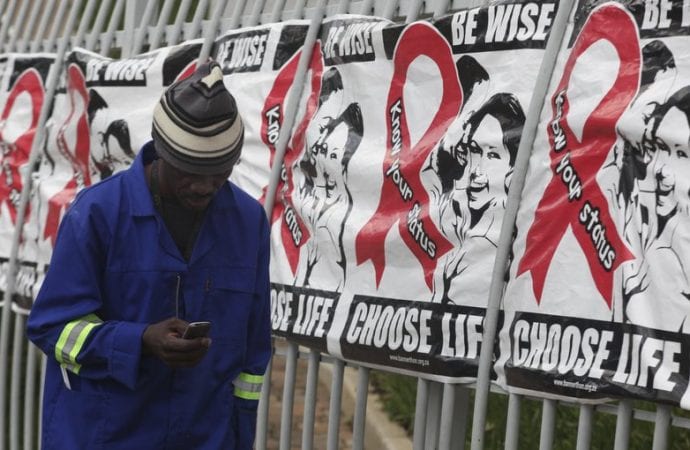Although the HIV/AIDS crisis in South Africa has fallen off the front pages, around 127,000 people die from the disease every year.
Although these numbers are less than the 267,000 who died in 2007, South Africa still has 7.97 million people infected with HIV, around 13.5 percent of the population, making it the hardest hit country in the world.
Mrudula Smithson, the director of the Aids Office at the Southern Africa Catholic Bishops’ Conference (SACBC) says “cultural practices” play a large role in the crisis.
“A sugar daddy syndrome is rife where older men pay, in cash or kind, for sexual favors. Young girls agree to sexual favors in order to pay for their luxuries such as hair, nail and airtime for their cell phones,” she told Crux.
“Gender based violence is extensive in South Africa,” Smithson added. “Sexual violence such as rape is considered gender-based violence. This contributes to HIV transmission.”
She said the stigma that usually goes with the disease contributes to its spread, since people living with HIV/AIDS “do not disclose their status for fear of being discriminated against and continue with high risk behavior.”
UNICEF estimates that there are 3.7 million orphans in South Africa. About half of them have lost one or both parents to AIDS. In addition, the UN AIDS office estimates 12,000 children are infected each year due to mother-to-child transmission.
Smithson said children affected or infected by HIV mostly live in a household headed by a grandmother, or even a minor sibling - finding life difficult.
“These children spend their days looking for means to sustain themselves and their dependents who are usually younger children. Many drop out of school in order to find an income source to provide for their families,” she told Crux.
The bishops’ AIDS Office has been providing support, ensuring that the children are linked to social grants and placed back in school.
“Uniforms and school supplies have also been provided to these children on occasion to ensure that the children are integrated into the school community and not ridiculed by other children,” Smithson said.
“Over the past four years, the SACBC AIDS office has provided support to approximately 50,000 children affected or infected by HIV. The support includes regular HIV testing and if HIV positive, provide treatment adherence support. In addition to HIV-related support, the program for orphans and vulnerable children includes assistance in obtaining social grants, homework support, nutritional support and psychosocial support,” she told Crux.
She said her office has been in the frontlines of the fight against AIDS, coordinating the Catholic Church’s response to the disease in South Africa, Botswana and Swaziland (the three countries constituting the territory of the bishops’ conference). In addition, its work extends to Lesotho and Namibia, through supplementary agreements with the bishops’ conferences of those countries.
She explained that the response is always guided by Catholic Social Teaching, and recognizes the dignity of every human being, the sanctity of life and solidarity.
Although the numbers of people living with HIV/AIDS has increased in South Africa over the past decade, deaths continue to decrease.
This can largely be attributed to the increased use of antiretroviral drug treatments in the country.
South Africa has the largest antiretroviral program in the world, reducing child mortality by 20 percent and the rate of new infections by 44 percent.
The use of antiretroviral therapy is still limited in large parts of sub-Saharan Africa, with 34 percent of people in east and southern Africa with HIV/AIDS not receiving treatment. In west and central Africa, that number shoots up to 60 percent. The entire region accounts for 75 percent of deaths and 65 percent of new infections around the world.

